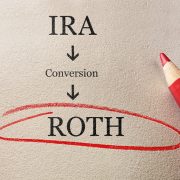The Basics Behind Investing in a Self-Directed Roth IRA
You might have heard of the Roth IRA. But if you’re new to the concept of retirement investing, you might not know what makes this account type so unique from the others. That’s why it’s important to not only understand what happens when you use a Self-Directed Roth IRA, but the basic facts that separate this type of account from the rest. To that end, let’s explore some of the “basics” of this account type that will help you understand what it means to invest with a Self-Directed Roth IRA.
The Self-Directed Roth IRA: Basic Facts
Let’s start with the easy stuff. A Self-Directed Roth IRA is a unique way to invest for retirement thanks to the fact that you make after-tax contributions. This means that while your contributions are not tax-deductible, the valid investments you make within a Roth IRA are considered already taxed. Upon hitting retirement age, you can begin to withdraw certain amounts out of your Roth IRA without paying additional taxes on these; after all, this is already considered taxed money. For this reason, investors who anticipate being in a higher tax bracket upon retirement age typically favor Roth IRAs.
There are some other basic facts worth knowing as well:
- To qualify for the tax-free treatment of a Roth IRA, you have to meet two conditions. Starting from the time you first open your Self-Directed Roth IRA; the account should be established for a minimum of five years. You also have to be 59 ½ years or older to realize the tax-free benefits of taking money from a Roth IRA.
- You can use a Roth IRA when you already have an employer-sponsored plan. Many people even advocate putting money toward the Roth IRA first, whenever possible, but this is a question to take up with a professional tax or investment adviser.
Why a Self-Directed Roth IRA?
You may have noticed that we keep attaching this phrase “self-directed” to the front of a Roth IRA. Why is that? When you direct your own retirement account, you gain the ability to invest in asset classes that most “traditional” providers don’t offer. Directing your own retirement account like a Roth IRA means that you can still invest in your traditional stocks and bonds, but it also allows you to invest in a wide range of alternative asset classes, such as real estate, precious metals, or tax liens among others. With a Self-Directed IRA, for example, you would work with a custodian on the account, directing them to make investment transactions on behalf of the account.
Self-directing can enable a retirement investor to gain access to a wider variety of potential retirement assets, which means that investors can take more direct control over what ends up in their portfolio. Although real estate and precious metals are two popular asset classes, this list can also include private stock, brokerage accounts, and even private notes. This has the advantage of giving investors all sorts of options, including building conservative or high-risk portfolios as they see fit.
Within a Self-Directed Roth IRA, the advantage is that investors can do this while also using after-tax money. If they meet the requirements of the government, this money will not be taxed when taken out of the account later in life. This provides investors with a lot of freedom as well as security. However, it requires a plan to make it all happen. And with a Self-Directed IRA, the investor is responsible for that plan, which means relying on a team of advisors such as financial advisors.
Interested in learning more about Self-Directed IRAs? Contact American IRA, LLC at 866-7500-IRA (472) for a free consultation. Download our free guides or visit us online at www.AmericanIRA.com.











